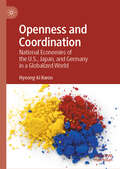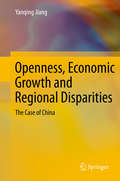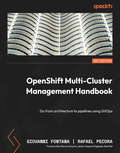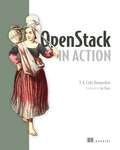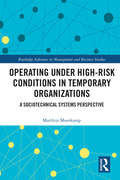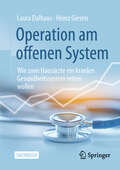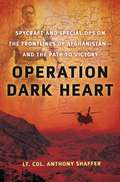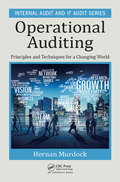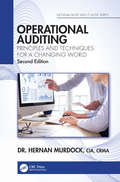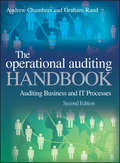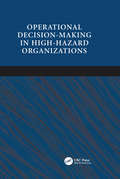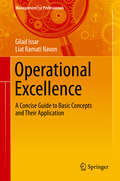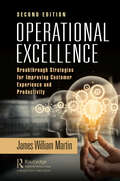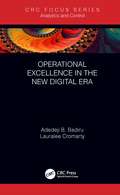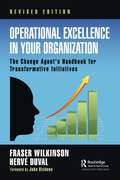- Table View
- List View
OpenInvest
by Nicole Tempest Keller Boris Vallee Shawn ColeFounded by a team of hedge fund and NGO alumni, OpenInvest launched its platform in 2015 to enable retail investors to tailor their portfolios to their personal values in an automated way, for instance by screening out weapons manufacturers stocks or overweighting LGBTQ friendly companies, while still closely tracking the overall stock market performance. In 2017, bolstered by $3.25 million in seed funding from Andreessen Horowitz, OpenInvest was preparing to launch an app targeted at millennial customers that would include a novel proxy voting feature that allowed clients to vote on shareholder resolutions with a simple swipe. With this technological addition, OpenInvest was well on its way towards realizing its mission of democratizing socially responsible investing, bringing transparency to the financial services market, and enabling retail investors to invest their capital in a way that aligned with their values. However, getting to scale and profitability in the crowded robo-advisors space was a critical challenge. The case closes with the founders contemplating expanding or migrating their model from B2C to B2B in order to achieve scale and profitability faster. The case is an opportunity to discuss the theoretical underpinning of creating impact in public markets, to explore how portfolio performance might be affected by Socially Responsible Investment (SRI) screens, and to understand drivers of demand for impacting investing more broadly. The case also explores the challenges the founders face when aiming to design a new product to meet an emerging need and which distribution channel to choose for doing so.
Openness and Coordination: National Economies of the U.S., Japan, and Germany in a Globalized World
by Hyeong-ki KwonThis book documents various patterns of re-constructing national economies in corporate globalization. As international competition toughens, major national corporations have been forced to reorganize themselves beyond their national boundaries in order to survive. The problem is that a serious tension arises between these national corporations’ self-interests and the overall interests of their national economies. Contrary to neoliberal optimism and nationalist pessimism, globalization does not lead to natural upgrade or denationalization. This book examines how three nations, including the free-market liberal U.S., the statist model of Japan, and the social coordination model of Germany, have reconstituted their national economies.
Openness, Economic Growth and Regional Disparities
by Yanqing JiangSubstantial disparities across different Chinese regions are one of the most prominent features in China's development process. This book investigates the mechanisms through which openness affects regional economic growth and interregional disparities in China. Based on the latest data and employing a variety of panel data regression techniques, it provides readers with new findings that shed light on the effects of openness on China's regional economic growth and the evolution of the country's interregional disparities.
OpenNotes
by Annelena Lobb Jeffrey RayportIn 2017, executives at OpenNotes, a national movement to improve the relationship between doctors and patients by sharing doctors' visit notes about patients with patients, were considering options in efforts to achieve scale. The movement hoped to reach 50 million patients by 2020. One opportunity was building an OpenNotes app for smartphones, in which patients could access their visit notes on their phones through an app compatible with Apple CareKit. But OpenNotes had other options, including partnerships with consumer groups and insurers. In addition, they would always have a role in encouraging doctors and institutions to share notes more readily. What was the best way to scale OpenNotes? Was it the app route, or some other way to pursue the group's ambitions?
OpenShift Multi-Cluster Management Handbook: Go from architecture to pipelines using GitOps
by Giovanni Fontana Rafael Pecora Marcos AmorimDiscover best practices for designing and scaling robust OpenShift clusters' architecture for different workloadsManage multiple clusters on-premise or in the cloud using multi-cluster management tools to keep them secure and compliantImplement multi-cluster CI/CD on OpenShift using GitOpsKey FeaturesDiscover best practices to design robust OpenShift architecture and scale them to different workloadsUnderstand the minimal collection of topics you should consider in your container security strategyImplement multi-cluster CI/CD on OpenShift using GitOpsBook DescriptionFor IT professionals working with Red Hat OpenShift Container Platform, the key to maximizing efficiency is understanding the powerful and resilient options to maintain the software development platform with minimal effort. OpenShift Multi-Cluster Management Handbook is a deep dive into the technology, containing knowledge essential for anyone who wants to work with OpenShift.This book starts by covering the architectural concepts and definitions necessary for deploying OpenShift clusters. It then takes you through designing Red Hat OpenShift for hybrid and multi-cloud infrastructure, showing you different approaches for multiple environments (from on-premises to cloud providers). As you advance, you'll learn container security strategies to protect pipelines, data, and infrastructure on each layer. You'll also discover tips for critical decision making once you understand the importance of designing a comprehensive project considering all aspects of an architecture that will allow the solution to scale as your application requires.By the end of this OpenShift book, you'll know how to design a comprehensive Red Hat OpenShift cluster architecture, deploy it, and effectively manage your enterprise-grade clusters and other critical components using tools in OpenShift Plus.What you will learnUnderstand the important aspects of OpenShift cluster architectureDesign your infrastructure to run across hybrid cloudsDefine the best strategy for multitenancy on OpenShiftDiscover efficient troubleshooting strategies with OpenShiftBuild and deploy your applications using OpenShift Pipelines (Tekton)Work with ArgoCD to deploy your applications using GitOps practicesMonitor your clusters' security using Red Hat Advanced Cluster SecurityWho this book is forThis book is for a wide range of IT professionals using or looking to use OpenShift with a hybrid/multi-cloud approach. In this book, IT architects will find practical guidance on OpenShift clusters' architecture, while Sysadmins, SREs, and IT operators will learn more about OpenShift deployment, troubleshooting, networking, security, and tools to manage multiple clusters from a single pane. For DevOps engineers, this book covers CI/CD strategies for multiple clusters using GitOps. Equipped with just basic knowledge of containerization and Kubernetes, you're ready to get started.
OpenStack in Action
by Cody BumgardnerSummaryOpenStack in Action offers the real world use cases and step-by-step instructions you can take to develop your own cloud platform from from inception to deployment. This book guides you through the design of both the physical hardware cluster and the infrastructure services you'll need to create a custom cloud platform.Purchase of the print book includes a free eBook in PDF, Kindle, and ePub formats from Manning Publications.About the TechnologyOpenStack is an open source framework that lets you create a private or public cloud platform on your own physical servers. You build custom infrastructure, platform, and software services without the expense and vendor lock-in associated with proprietary cloud platforms like Amazon Web Services and Microsoft Azure. With an OpenStack private cloud, you can get increased security, more control, improved reliability, and lower costs.About the BookOpenStack in Action offers real-world use cases and step-by-step instructions on how to develop your own cloud platform. This book guides you through the design of both the physical hardware cluster and the infrastructure services you'll need. You'll learn how to select and set up virtual and physical servers, how to implement software-defined networking, and technical details of designing, deploying, and operating an OpenStack cloud in your enterprise. You'll also discover how to best tailor your OpenStack deployment for your environment. Finally, you'll learn how your cloud can offer user-facing software and infrastructure services.What's InsideDevelop and deploy an enterprise private cloudPrivate cloud technologies from an IT perspectiveOrganizational impact of self-service cloud computingAbout the ReaderNo prior knowledge of OpenStack or cloud development is assumed.About the AuthorCody Bumgardner is the Chief Technology Architect at a large university where he is responsible for the architecture, deployment, and long-term strategy of OpenStack private clouds and other cloud computing initiatives.Table of ContentsPART 1 GETTING STARTEDIntroducing OpenStackTaking an OpenStack test-driveLearning basic OpenStack operationsUnderstanding private cloud building blocksPART 2 WALKING THROUGH A MANUAL DEPLOYMENTWalking through a Controller deploymentWalking through a Networking deploymentWalking through a Block Storage deploymentWalking through a Compute deploymentPART 3 BUILDING A PRODUCTION ENVIRONMENTArchitecting your OpenStackDeploying CephAutomated HA OpenStack deployment with FuelCloud orchestration using OpenStack
Operaciones con futuros financieros: Guía de trading para el mercado argentino
by Mariano Pantanetti Germán MarínLo que tiene precio puede tener precio futuro, y si puede tener precio futuro, habrá un mercado para negociarlo. Estas operaciones requieren de un conocimiento técnico que los autores comparten aquí para ayudar al lector a ampliar sus horizontes financieros... por un futuro mejor. ¿Qué son los futuros? ¿Cómo se opera en los mercados de futuros? ¿Con qué marco normativo se rigen? ¿Cuáles son las especificaciones de cada contrato? ¿Cómo se evitan errores de estrategia? ¿Por qué invertir en futuros financieros? Los autores introducen el mundo de los futuros de commodities, divisas, acciones y títulos públicos, y enseñan a hacer tasa con futuros de dólar, índice Rofex y criptomonedas. Combinan ejemplos reales, reflexiones, conceptos teóricos y ejercicios con la terminología más usada y el software más útil. Además, este libro presenta dos generosas colaboraciones: Alejandro Romero Maidana desarrolla paso a paso una estrategia de análisis técnico aplicada a futuros, y Hernán Soulages, de Quiena Inversiones, explica los efectos contango y backwardation para ajustar la estrategia según las condiciones del mercado. Como sostiene Iván Dalonso -Chief Business Officer del Grupo Matba Rofex- en el prólogo, "Mariano Pantanetti y Germán Marin logran reflejar con creces esa pasión por los mercados de futuros y opciones, su evolución y, más en concreto, la utilidad de los instrumentos derivados para la vida cotidiana".
Operating Across Boundaries: Leading Adaptive Change
by Ronald HeifetzHuman communities have always had to acquire new adaptive capacity. With each new wrinkle of complexity, often generated by new technologies, people have had to invent and discover new ways of living and doing business across group boundaries. So it should come as no surprise that in the face of our ever-changing and globalizing technologies, practices, and aspirations, we face important challenges for which our current repertoire of strategies for managing relationships across groups will not suffice. In this chapter, Ronald Heifetz, founding director of the Center for Public Leadership at the Harvard Kennedy School of Government, briefly outlines the kind of work required when organizations and communities face intergroup problems requiring some degree of new organizational or cultural adaptation. Here he focuses on three aspects of adaptive work: the commonality of loss, the politics of inclusion and exclusion, and the task of renegotiating loyalties. This chapter was previously published as chapter 10 of "Crossing the Divide: Intergroup Leadership in a World of Difference."
Operating as a Team: Putting Ideas to Work
by Harvard Business Review PressMany teams encounter problems operationally when the work first begins. Work patterns may develop that hinder the planned vision of the team. This chapter examines key aspects of team operations that help create the most effective group possible.
Operating Room Leadership and Management
by Alan D. Kaye Charles J. Fox III Richard D. UrmanEffective management of the OR is critical in all clinical settings, where ensuring that policies, systems, staff members and teams are efficient, safe and cost-effective is paramount. Operating Room Leadership and Management is a comprehensive resource for physicians and administrators involved in the day-to-day management of operating rooms in a hospital setting or smaller-scale facilities. Topics include: • OR metrics • Scheduling • Human resource management • Leadership • Economics • IT management • Quality assurance • Recovery. This practical, evidence-based text is written by leaders in the field of OR management and is relevant to medical directors, administrators and managing physicians. Specific nursing considerations, preoperative patient evaluation, financial performance measures and pain clinic management are also discussed in detail. Operating Room Leadership and Management enables all OR managers to improve the efficiency and performance of their operating rooms.
Operating Under High-Risk Conditions in Temporary Organizations: A Sociotechnical Systems Perspective (Routledge Advances in Management and Business Studies)
by Matthijs MoorkampOrganizations increasingly use temporary designs. Many temporary organizations are assembled by "mixing and matching" building blocks from static, bureaucratic, parent organizations into a temporary configuration. At the same time, such "mixed and matched" temporary organizations often operate under difficult and dangerous circumstances. During operations, these temporary organizations can experience numerous internal problems: ranging from friendly fire in a military context to budget and time issues in construction projects and problematic coordination in a crisis management context. This book develops insight into the relationship between a "mixing and matching" temporary design strategy and operational problems. To so do, military and crisis management contexts are systematically studied from a sociotechnical design perspective that emphasizes self-organization to develop organizational controllability. Operating Under High-Risk Conditions in Temporary Organizations demonstrates that a "mixing and matching" design strategy can be related to system failure. Furthermore, it is shown that a process of self-design emerged in which operators attempted to create ad-hoc networks for meaningful, safe and controllable operations. The analyses result in a model that shows mechanisms between characteristics of organizational design and controllability of operations. Not only does this model have relevance to the military and crisis management contexts, relevance is also demonstrated for a broader family of temporary organizations and application of sociotechnical network design theory.
Operation am offenen System: Wie zwei Hausärzte ein krankes Gesundheitssystem retten wollen
by Laura Dalhaus Heinz GiesenDieses Buch zeigt, wie die medizinische Versorgung in einem scheinbar unreformierbaren System neu gestaltet werden kann. Denn unser Gesundheitssystem hat längst diejenigen aus dem Blick verloren, die eigentlich im Mittelpunkt aller Bemühungen stehen: die Patientinnen und Patienten. Immer längere Wartezeiten auf Diagnostik und Therapie, bürokratische Hürden und eine intransparente Finanzierung medizinischer Leistungen belasten die Versorgung. Für viele Betroffene hat dies weitreichende Folgen: Krankheit wird zum Risiko für Arbeitslosigkeit, sozialen Abstieg und Armut. 2023 veröffentlichte Dr. Laura Dalhaus ihr Buch „Medizin zwischen Moral und Moneten“ über die Realitäten der Patientenversorgung. In ihrem neuen Werk entwickelt sie gemeinsam mit Dr. Dr. Heinz Giesen daraus ein Konzept, das die Kostenfokussierung ablöst und den Patientennutzen in den Mittelpunkt stellt: die Sicherstellungsbörse. Indem dringende Untersuchungen und Behandlungen gezielt priorisiert und gesondert vergütet werden, bieten die Autoren innovative Lösungen, um den Widerspruch zwischen „Moral und Moneten“ in unserem Gesundheitssystem aufzulösen. Höchste Zeit für den Eingriff am offenen System! Dieses Buch ist ein dringender Weckruf und liefert Lösungen für Politik, Krankenkassen, Arbeitgeber und Patienten, um in Zukunft wieder eine flächendeckende, gerechte und nachhaltige medizinische Versorgung zu gewährleisten. „Als Präsident der Ärztekammer Westfalen-Lippe sehe ich es als unsere gemeinsame Pflicht an, diese vorgeschlagenen Lösungsansätze nicht nur zu diskutieren, sondern aktiv in die Praxis umzusetzen.“ Dr. med. Johannes Albert Gehle
Operation Dark Heart: Spycraft and Special Ops on the Frontlines of Afghanistan -- and the Path to Victory
by Anthony ShafferOn Friday, August 13, 2010, just as St. Martin's Press was readying its initial shipment of this book, the Department of Defense contacted us to express its concern that our publication of Operation Dark Heart could cause damage to U.S. national security. After consulting with our author, we agreed to incorporate some of the government's changes into a revised edition of his book while redacting other text he was told was classified. The newly revised book keeps our national interests secure, but this highly qualified warrior's story is still intact; Shaffer's assessment of successes and failures in Afghanistan remains dramatic, shocking, and crucial reading for anyone concerned about the outcome of the war. While I do not agree with the edits in many ways, the DoD redactions enhance; the reader's understanding by drawing attention to; the flawed results created by a disorganized and heavy handed military intelligence bureaucracy. Lt. Col. Anthony Shaffer had run intelligence operations for years before he arrived in Afghanistan. He was part of the; dark side of the force;---the shadowy elements of the U.S. government that function outside the bounds of the normal system. His group called themselves the Jedi Knights and pledged to use the dark arts of espionage to protect the country from its enemies. Shaffer's mission to Afghanistan, however, was unlike any he had ever experienced before. There, he led a black-ops team on the forefront of the military efforts to block the Taliban's resurgence. They not only planned complex intelligence operations to beat back the insurgents, but also played a key role in executing those operations---outside the wire. They succeeded in striking at the core of the Taliban and their safe havens across the border in Pakistan. For a moment Shaffer saw us winning the war. Then the military brass got involved. The policies that top officials relied on were hopelessly flawed. Shaffer and his team were forced to sit and watch as the insurgency grew---just across the border in Pakistan. This wasn't the first time he had seen bureaucracy stand in the way of national security. He had participated in Able Danger, the aborted intelligence operation that identified many of the future 9/11 terrorists but failed to pursue them. His attempt to reveal the truth to the 9/11 Commission would not go over well with his higher-ups. Operation Dark Heart tells the story of what really went on--and what went wrong--in Afghanistan. Shaffer witnessed firsthand the tipping point, when what seemed like certain victory turned into failure. Now, in this book, he maps out a way that could put us on the path to winning the war.
Operation of Smart Homes (Power Systems)
by Mehdi Rahmani-AndebiliThis book presents the latest research advancements in the operation of smart homes. It comprises new operation techniques including cooperative distributed energy scheduling, framework to react to malicious cyberattacks, framework for demand-side management, and framework for the design of smart homes to support residents’ wellness as well as new optimization techniques such as stochastic model predictive control and multi-time scale optimization. In addition, the book analyzes 11,000 studies that have been indexed in scientific databases and categorizes them based on various data points, including the field and the subject of the research, the name of the institutions, and the nationality of the authors.Presents new operation techniques of smart homes;Introduces new optimization techniques for operation of smart homes;Analyses 11,000 studies and categorizes them based on different data points.
Operation Overlord
by Boris Groysberg Greg Goullet Katherine Connolly Baden Sarah L. AbbottOn June 6, 1944, nearly 5,000 ships, 11,000 planes, and 160,000 infantrymen under an Allied joint-command of American, British, and Canadian leaders were sent across the English Channel, with hopes of re-establishing a foothold in Nazi-occupied France. Known as D-Day, June 6 marked a definitive turning point in World War II and was viewed by many as the most significant military campaign in history. It was also one of the riskiest. Code named Operation Overlord, the invasion required years of diligent planning and countless hours of labor from Allied soldiers and citizens. Before they could attempt a successful invasion of continental Europe, British and American leadership recognized large scale preparatory efforts must take place: the establishment of a leadership team and organizational structure, the arrival of Allied troops in England and subsequent training sessions, the containment of German air superiority over Europe as well as its supply lines, and finally, the development and use of innovative information sources in planning the attack.
Operational and Strategy Review Meetings: Keeping the Organization on a Strategic Trajectory for Breakthrough Performance
by Robert S. Kaplan David P. NortonWith strategy and operational plans in place, the enterprise embarks on executing the strategy: producing and delivering products and services to customers, implementing initiatives, and improving processes. However, like mission control after a spaceship has been launched, the enterprise needs to continually monitor and adjust its performance to achieve strategic objectives. Managers guide the enterprise by holding a structured set of meetings that deal with operational and improvement programs and review the strategy and adjust or transform it as needed.
Operational Auditing: Principles and Techniques for a Changing World (Internal Audit and IT Audit #11)
by Hernan MurdockInternal auditors are expected to perform risk-based audits, but do so partially because they focus on financial and compliance risks at the expense of operational, strategic and technological ones. This limits their ability to evaluate critical risks and processes. This book merges traditional internal audit concepts and practices with contemporary quality control methodologies, tips, tools and techniques. It helps internal auditors perform value-added operational audits that result in meaningful findings and useful recommendations to help organizations meet objectives and improve the perception of internal auditors as high-value contributors, appropriate change agents and trusted advisors.
Operational Auditing: Principles and Techniques for a Changing World (Internal Audit and IT Audit #11)
by Hernan MurdockOperational Auditing: Principles and Techniques for a Changing World, 2nd edition, explains the proven approaches and essential procedures to perform risk-based operational audits. It shows how to effectively evaluate the relevant dynamics associated with programs and processes, including operational, strategic, technological, financial and compliance objectives and risks. This book merges traditional internal audit concepts and practices with contemporary quality control methodologies, tips, tools and techniques. It explains how internal auditors can perform operational audits that result in meaningful findings and useful recommendations to help organizations meet objectives and improve the perception of internal auditors as high-value contributors, appropriate change agents and trusted advisors. The 2nd edition introduces or expands the previous coverage of: • Control self-assessments. • The 7 Es framework for operational quality. • Linkages to ISO 9000. • Flowcharting techniques and value-stream analysis • Continuous monitoring. • The use of Key Performance Indicators (KPIs) and Key Risk Indicators (KRIs). • Robotic process automation (RPA), artificial intelligence (AI) and machine learning (ML); and • Adds a new chapter that will examine the role of organizational structure and its impact on effective communications, task allocation, coordination, and operational resiliency to more effectively respond to market demands.
The Operational Auditing Handbook
by Andrew Chambers Graham RandNever out of print since 1997, and substantially updated for this second edition, The Operational Auditing Handbook has earned an international reputation as a hands-on, practical manual for internal auditors and managers to enable them to carry out audits and reviews of a wide range of business activities including:Finance and accountingSarbanes-Oxley compliancePurchasingOperations and productionMarketing and salesDistributionPersonnel and management developmentResearch and developmentInformation technologySecurityEnvironmental responsibilitySubsidiaries and remote operating unitsThe Operational Auditing Handbook clarifies the underlying issues, risks and objectives for a wide range of operations and activities and is a professional companion, with many checklists, for those who design self-assessment and audit programmes of business processes in all sectors. Reflecting the strategic importance of information technology today, this second edition is considerably expanded in this area with leading edge material. Other completely new material includes clear, authoritative guidance on how to achieve effective of governance, risk management and internal control processes.
Operational Decision-making in High-hazard Organizations: Drawing a Line in the Sand
by Jan HayesThis book takes a fresh look at safety decision-making by documenting and examining stories told by front-line managers in three different high-hazard industries: a chemical plant, a nuclear power station and an air-navigation service provider. From Piper Alpha to Deepwater Horizon, accident analysis has stressed the importance of excellent decision-making by those in charge out in the field. Organizations rely critically on the judgement and experience of such senior operations personnel and yet these qualities are undervalued in a business environment that emphasises documentation and measurement. Whilst operational managers are guided by rules, they also draw on their own long experience and can formulate a situation-specific ’line in the sand’ to apply the experience of the operating team to complex, real-world situations that rule writers may not have foreseen. This volume refocuses our attention on the people who make these important decisions and the organizational processes that support the best choices. Jan Hayes uses her multi-disciplinary experience to draw together an account of safety decision-making that is both technically robust and yet accessible to academics, practitioners and regulators alike. Readers will see that the stories retold in this book provide a way for operational managers to share their knowledge, experience and expertise - with each other and with us.
Operational Excellence
by Gilad Issar Liat Ramati NavonAs industrial companies are placing a higher focus on operations, this book comes at the right time with a compilation of basic concepts of Operational Excellence and their application. Operational excellence allows companies to recover from reductions in gross margins and low profitability, which largely occur due to a rise in agile competition and the short life span of new technologies. This book helps managers and consulting academicians as a ready reference for cross-industry implementation of operational excellence.
Operational Excellence: Breakthrough Strategies for Improving Customer Experience and Productivity
by James William MartinOperational Excellence, Second Edition – Breakthrough Strategies for Improving Customer Experience and Productivity brings together leading-edge tools, methods, and concepts to provide process improvement experts a reference to improve their organization’s quality, productivity, and customer service operations. Its major topics include alignment of strategy to the design of supporting systems to meet customer expectations, manage capacity, and improve performance. It provides a concise and practical reference for operational excellence. Its fourteen chapters lead a reader through the latest tools, methods, and concepts currently used to capture "voice of" customers, partners, and other stakeholders, new strategies for the application of Lean, Six Sigma, as well as product and service design across diverse industries, including manufacturing to financial services. This book operates from three premises: Organizations can increase competitiveness in an era of globalization through the application of "voice-of" applications, Design Thinking, the integration of the Information Technology Ecosystem’s new tools and methods integrated with proven Lean and Six Sigma applications Operational performance correlates to an organization’s financial, operational, and resultant productivity, as well as with shareholder economic value add (EVA) metrics and can be measured and improved using the methods in this book Value-adding activities and disciplines discussed are global and applicable to every organization A PRACTICAL TOOL FOR REAL-WORLD APPLICATION New topics are introduced in the second edition. These include Design Thinking, the "voice-of" Information Technology Ecosystems, Big Data applications, and Robotic Process Automation. Key topics from the first edition remain. These include Design-for-Six-Sigma (DFSS), Lean and Six Sigma methods, productivity analysis, operational assessments, project management, and other supporting topics. Each chapter contains tools and methods that will help readers identify areas for operational improvements. It contains ~300 figures, tables, and checklists to help increase organizational productivity. Practical examples are integrated through the book.
Operational Excellence in the New Digital Era (Analytics and Control)
by Adedeji B. Badiru Lauralee CromartyOperational excellence, as a quest in the prevailing digital era, is predicated on a systems view of the operating environments in business, industry, government, academia, and other organizational entities. This book uses a systems-based approach to show how operational excellence can be pursued, achieved, and sustained. It offers a systems perspective for operational excellence and discusses the evolution of products from the classical operation era to present day digital operations. It covers the role of global markets on domestic operations, presents operational work design and ergonomics, and combines industrial engineering, advanced research, and practical experience. This book is a useful guide for scholars, practitioners and those involved in engineering, management, and business fields.
Operational Excellence in Your Office: A Guide to Achieving Autonomous Value Stream Flow with Lean Techniques
by Kevin J. Duggan Tim HealeyOperational Excellence is achieved when all employees in your organization can see the flow of value to your customers and can make adjustments to that flow before it breaks down. Operational Excellence in Your Office: A Guide to Achieving Autonomous Value Stream Flow with Lean Techniques presents nine time-tested guidelines for designing business process flow that enable Operational Excellence in the office. Each chapter describes one guideline by using text, illustrations, and practical examples to provide a comprehensive understanding of why creating flow in the office is essential and how to achieve it.Accounting for the reality that most office employees are required to work on many different projects throughout the day, this book details a step-by-step methodology for leveraging traditional value stream flow to establish Operational Excellence in an office environment. In addition, it describes a more advanced form of flow called "self-healing" flow—in which employees are capable of identifying and fixing problems with the flow without requiring management intervention.Explaining how to achieve Operational Excellence and self-healing flow with the nine guidelines, the book also introduces new concepts such as part-time continuous flow processing cells, workflow cycles, takt capability, integration events, pitch in the office, and ways to tell whether your office is on time.With this book, you will be able to take the knowledge provided and immediately apply it by following the step-by-step checklists included at the end of each chapter. In addition to the lists of action items for implementing each guideline, the book includes "acid tests" you can use to determine if you have implemented each guideline correctly.When finished, you will have designed an end-to-end flow for the services in your office as well as visual systems to help employees distinguish normal flow from abnormal flow so they can fix flow problems on their own, before they negatively impact your customers.
Operational Excellence in Your Organization: The Change Agent's Handbook for Transformative Initiatives
by Fraser Wilkinson Herve DuvalOrganizations are under continued pressure to improve and innovate products and services to remain relevant and sustainable. In many cases, some form of “transformation” program is conceived to help achieve this aim. The transformation itself may include the deployment of systems and processes that make the organization more capable of sustaining improvements and driving future change. “Change Agents” often act as coaches, trainers, mentors, and facilitators to embed change. In practice, these Change Agents must deal with resistance throughout different levels of the organization. These Change Agents must be able to act as flexible, multi-situational problem solvers, and teachers of those problem-solving skills. Only organizations that have developed a strong problem-solving capability can hope to survive for sustained periods of time.This book describes many of the obstacles that Change Agents must overcome and the knowledge they need to make them credible with both leaders and the workforce they are tasked with navigating through an organizational transformation. Technical subjects such as diagnostic and improvement tools are described as well as pointing the reader in the direction of relevant theory and practical advice from the authors who have collectively more than 45 years of experience in such roles. Subject matter expertise in Lean Operations, Theory of Constraints, Six Sigma, Change Management, Excellence Models, Daily Management, and Problem Solving is used to describe some essential frameworks that can be brought together in a powerful system of improvement to aid organizations, but most importantly to support and encourage the Change Agent wherever they are in their career.At some point, leaders and managers will also be expected to act as Change Agents. This work brings together simple, universal, accessible, and practical resources to help guide those front-line Change Agents regardless of particular industry or experience.

